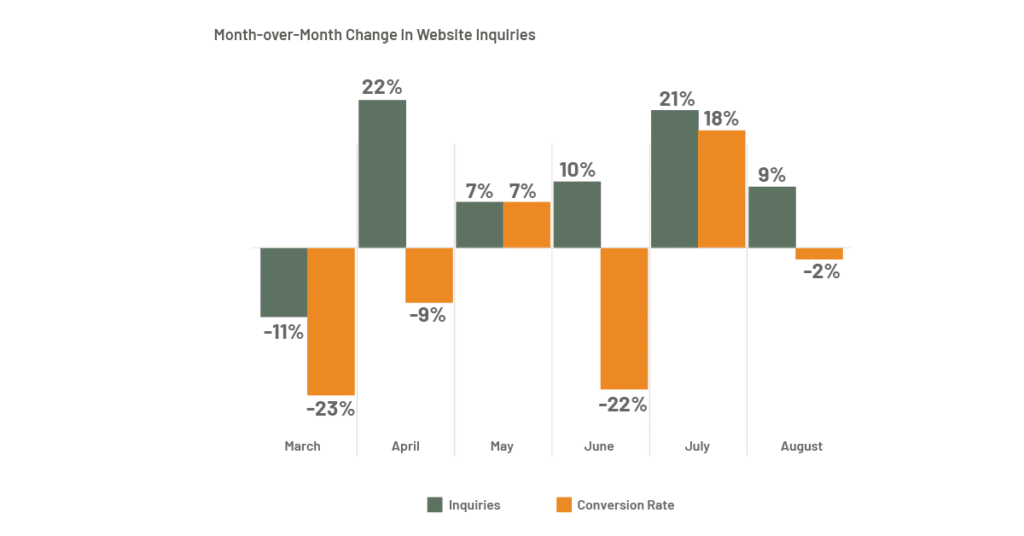Beyond Benchmarks 2020 – The New State of Higher Education

At the start of 2020, no one could have predicted the impact of COVID-19. In just a few months, it has pushed higher education online, altered the trajectory of the labor market and forced institutions to rethink the education landscape. The consensus is that the events of this year will permanently alter higher education. Download our latest report, Beyond Benchmarks 2020, to take a comprehensive look at the new landscape of higher ed enrollment management and the workforce factors that impact it.
At the end of 2019, the economy was doing well with no signs of slowing down. There was no indication that an economic downturn was imminent. At least, not at first glance. With the benefit of hindsight, the data on the job market exposes some gaps. Then came the coronavirus. The environment changed drastically and suddenly. Those seemingly small weaknesses in an otherwise robust economy became serious fault lines. The lowest skilled and least educated workers are feeling the impact of the pandemic most strongly. Compounding the challenge, the solutions likely to help these workers, upskilling and training, are more difficult to deliver than ever before.

Download the Beyond Benchmarks 2020 Report
As a result of the coronavirus, nearly one in three workers believe that they would need to switch industries if they were to lose their job, according to Strada Education. The right educational opportunities can help unlock the labor market for job seekers, though. Education can train employees and enrich the pool of candidates. The complications are immense, with certain regions and industries harder hit than others, but finding solutions is vital. Innovative and insightful changes in education can improve outcomes for everyone.
While the economic downturn is likely to be protracted and recovery will be slow, prospective students will be searching for long-term solutions that will help insulate and protect them from future economic downturns. Recovery will not look the same in each community, so find the occupations and fields in your area that were most impacted and present the opportunities for new and enhanced programs. While our world is becoming increasingly digital, students continue to seek out and select local options for education.
Spring 2020 enrollments were generally stable and even showing growth across most sectors of higher education. By the Summer 2020 semester, we started to see the impact of the pandemic and the economy. The sectors most impacted were community colleges and for-profit institutions. There was a significant impact to specific demographic groups, with enrollments amongst Black students and male students experiencing the most enrollment erosion, particularly in community colleges.

Source: National Student Clearinghouse Research Center
There is good news, though. Prospective students are continuing to explore their higher education options, and we are seeing behavior patterns that suggest they are engaging with schools. While both organic and paid search traffic declined in March 2020, the volume of total unique page visits has greatly improved for both categories over the summer months. Further, we witnessed a significant improvement in the total Request for Information (RFI) form submissions over the summer. At EducationDynamics we continuously monitor the broader landscape impacting higher education. By evaluating external forces and taking stocking of student demands and preferences, we amass insights to inform higher education decisions. These insights and those gathered from other channels, mediums and platforms don’t just inform us of what’s happening now. They also enable us to look forward.

Source: EducationDynamics internal data
Download the full Beyond Benchmarks 2020 report to gain a better understanding of the current higher education landscape and the factors that are likely to impact student behavior in the coming year.